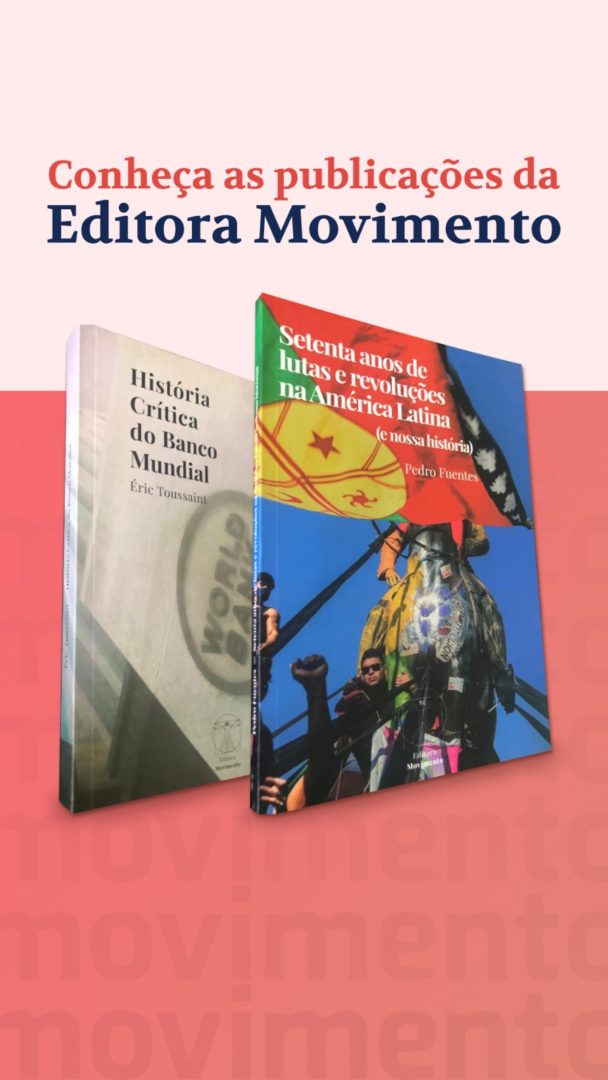What does the “revolt of Generation Z” around the world mean?
And what is our role in these struggles?
Three years after the coup that brought Dina Boluarte to power in Peru, the president with the highest rejection rate in Latin America was unanimously removed by the national congress for “moral incapacity” to remain in office. With 93% of the population opposed to her government, Boluarte’s removal was decisively influenced by the wave of protests that the peruvian youth had been orchestrating against her and her pension reform.
These demonstrations were called “the march of Generation Z,” in reference to a global process of revolts and mobilizations broadly led by youth.
This symbol of “Gen Z” marches or revolts has been taken by massive mobilizations in several countries worldwide. Building an identity from the august protests in Indonesia, the movement reached a higher degree of radicalism in the revolt in Nepal and, from there, spread to many parts of the globe, such as Morocco, Madagascar, the Philippines and Kenya.
The popular anime “One Piece” flag became a symbol among protesters, in an attempt to build a common image among the various revolts initiated for different reasons.
At the same time, another mass movement in which youth plays an important role is the struggle for the Palestinian cause. The interception of the Global Summud Flotilla was an important spark for massive mobilizations, especially in Europe and the Arab world. In some places, such as France, the symbols of both struggles have, in some way, already met in the protests against Macron and in defense of the Palestinian people.
Amid a new process of class struggle, it is therefore necessary to ask: what are these youth mobilizations around the world, and what challenges can we pose to ourselves in them?
The struggles
Youth have already been leading important struggles over the past year, especially in the student revolt in Bangladesh and the anti-authoritarian mobilization in South Korea. This year, however, the scope and connection of the acts has built a common mark among these diverse mobilizations led by young people.
Already in June, in Kenya, the death of the blogger Albert Ojwang while detained for defaming the country’s deputy vice-chief of police opened space for strong manifestations in the country between June and July, being the first massive youth protests of the year. The movement was harshly repressed, with more than 1,500 people arrested and at least 65 killed.
The symbols that have marked these acts globally, however, began to take clearer form in Indonesia. Since February, the country’s student movement had been organizing demonstrations on various issues, such as the increase in police spending and corruption of important politicians. However, in August, the protests began to nationalize, as protests against the increase of parliamentary housing allowance to the equivalent of 10 times the country’s minimum wage.
The death of a food delivery worker, who was not participating in the mobilizations, by the police, during a protest caused the movement to expand even further: in a country where underemployment was expanding and distrust in government was growing, this killing drove hundreds of thousands of people onto the streets in a generalized critique of the government, its political system and the repression.
In the ensuing months, multiple countries experienced uprisings and massive youth mobilizations. The most reported case, also for its radicalism, was possibly Nepal. In a country whose youth unemployment is 22%, the youth entered into a generalized revolt after the government banned the use of social networks. But the demands went further, criticizing living conditions, under-employment, nepotism and the political system, even leading to the ousting of the country’s prime minister. The way protesters took over the country’s main cities by organizing through digital means reverberated around the world through social media.
This strengthened a sense of commonality across various mobilizations that have grown since then among youth. In Morocco, the mobilizations were initiated by criticism of expenditures made for the 2030 World Cup; in the Philippines by corruption cases in government; in Madagascar, the protests began against cuts in energy and water. The demands are diverse and often diffuse and, in many cases, the struggles became more generalized revolts against the political systems themselves.
A common feeling, however, managed to be constructed amidst this dispersion — and this isn’t by accident: it is linked directly to the multifaceted crisis of global capitalism.
The reasons
There is no single answer for why these mobilizations are happening. But to understand this dynamic, it is only possible by analyzing the moment in which capitalism and global geopolitics live. The “interregnum” — the moment described by Gramsci where those in power cannot govern normally anymore, but there is no possibility yet of takeover by their social adversaries — remains a reality of our times.
The economic crisis that begun in 2008 never fully closed its cycle, showing that there is a structural difficulty of capital to reproduce itself. The capitalists’ bet was to save banks with public money and expand speculative capital, strengthening a permanent crisis: regional recessions, industries in crisis, mass layoffs, corrupt governments of low popularity are the general rules of the last decades.
This scenario also generated a crisis of perspective about the system itself, which served as the base for mass revolts like the Arab Spring and other global mobilizations, which in Brazil expressed themselves in June 2013.
The global scenario in 2025 isn’t one of crisis overcome, worse than that, in some way it has advanced. The pandemic served as a tool for expanding inequalities; in addition, the far-right consolidated as a phenomenon, expanding out of a diffuse indignation born of the crisis and taking advantage of the radical left’s difficulty in building its own alternative.
This world in dispute with neofascism, therefore, became a world of even more crises and conflict: the expansion of wars, the genocide in Gaza, the tariff dispute. All this scenario disassembles the liberal lie of the march of capitalism toward a stable world, where confrontations can be resolved via institutions.
It is this global crisis, therefore, still without a real alternative solution, that expresses itself in the most diverse ways in different countries. Corruption, police violence, lack of sanitation, withdrawal of pension rights: anything can be a spark for governments already weakened and a global system unstable. The protests of Generation Z are one of the reflections of this conjuncture and of the search by youth — disbelieving in their governments and institutions — for an alternative that still does not exist to the objective conditions they live.
The symbols, methods and meanings
Recent protests have developed with two main symbols: the generation-mark itself (in Morocco, for example, the movement has been called “Gen 212,” referencing the country’s postal code) and the straw-hat flag from the anime One Piece, which has been adapted in various local symbols and images, based on the pirate flag.
The claim of the protests as “Generation Z” reinforce, beyond a generational mark, the youth’s own protagonism in addressing the crisis in which they live and grew up also using their own methods, in which the organization of struggles via “new” social networks such as TikTok and Discord is part of their expression.
But this common identity also seeks to build a sense of international connection, of protests that — even with different agendas — are part of a “bigger” movement built by this generation.
Alongside this, emerges the straw-hat flag, initiated as a protest of the truck drivers in Indonesia, which was criticized by the government as “anti-national,” the flag found diverse adaptations in each country, being used as a symbol of anti-authoritarianism and revolt.
The anime, marked by the struggle of its protagonists against a world government that maintains an ultra-privileged elite while the majority of people are exploited, manages to become a symbol also because of the absence of representation and alternatives that this youth finds in the real world.
That is to say — these mobilizations are finding symbols that correspond to their current dynamic, expressing at the same time the youth’s will to take for themselves the leading role in confronting a system that only includes them to exploit them, without at the same time having a defined alternative to carry this struggle to the end.
The dispute for a program
In recent months, another process of global struggles has taken to the world: the defense of the Palestinian people, especially from the interception of the Global Summud Flotilla. Millions of people around the world took to the streets in countries such as Germany, Tunisia, the Netherlands and Spain. In Italy, the struggle was even more radicalized, with general strikes and a very strong role of the student movement in the occupation of universities.
The days of October 2 and 3 built global marches that had not been seen in a unified form for a long time, with a broader composition, but also with a significant youth weight.
The resistance against the genocide built by the State of Israel and its accomplices made several countries have their largest demonstrations in years and was fundamental to the decision of several governments in recognizing Palestine. However, this banner also showed itself as a mark of unity, with a youth’s strong presence, of various sectors around the world willing to face the far-right.
In some countries, this mobilization joined the struggles against their own bourgeoisies, such as in the French strikes and mobilizations against Macron and his neoliberal adjustments. This connection shows an important challenge: to build an alternative amid the crisis. The expression of Zohran Mamdani in New York shows an open space, with a self-declared socialist, in favor of the Palestinian cause, with greater probability of being elected mayor of the city.
This demonstrates how urgent it is to build an anti-capitalist alternative to the crisis — something that cannot be done only by reaffirming an ultimate, abstract programme. Understanding and disputing these youth mobilizations globally is a fundamental part of this, since by their very amplitude, they will certainly be disputed by various social sectors and the result of this dynamic also depends on who acts inside these struggles and gives answers to them.
That is, there is a triple challenge: to understand and act in these youth revolts around the world, to connect this process with the global confrontation of the far-right, as has been done in practice with the struggle against the genocide perpetuated by Israel, and to affirm an anti-capitalist space within this dynamic.
In this sense, the unity built around the Palestinian struggle, which among youth had one of the expressions in the campaign organized by the Flotilla, Waves To Gaza, was a fundamental step and helped connect sectors in struggle. We have a forthcoming opportunity, with the Antifascist Conference in Porto Alegre, which can also be a space to bring together important sectors of this youth in mobilization.
It is necessary that indignation finds a programme, but for that we need to strengthen the struggles and build bridges.
Theo Louzada Lobato is a member of the National Coordination of Juntos!























































